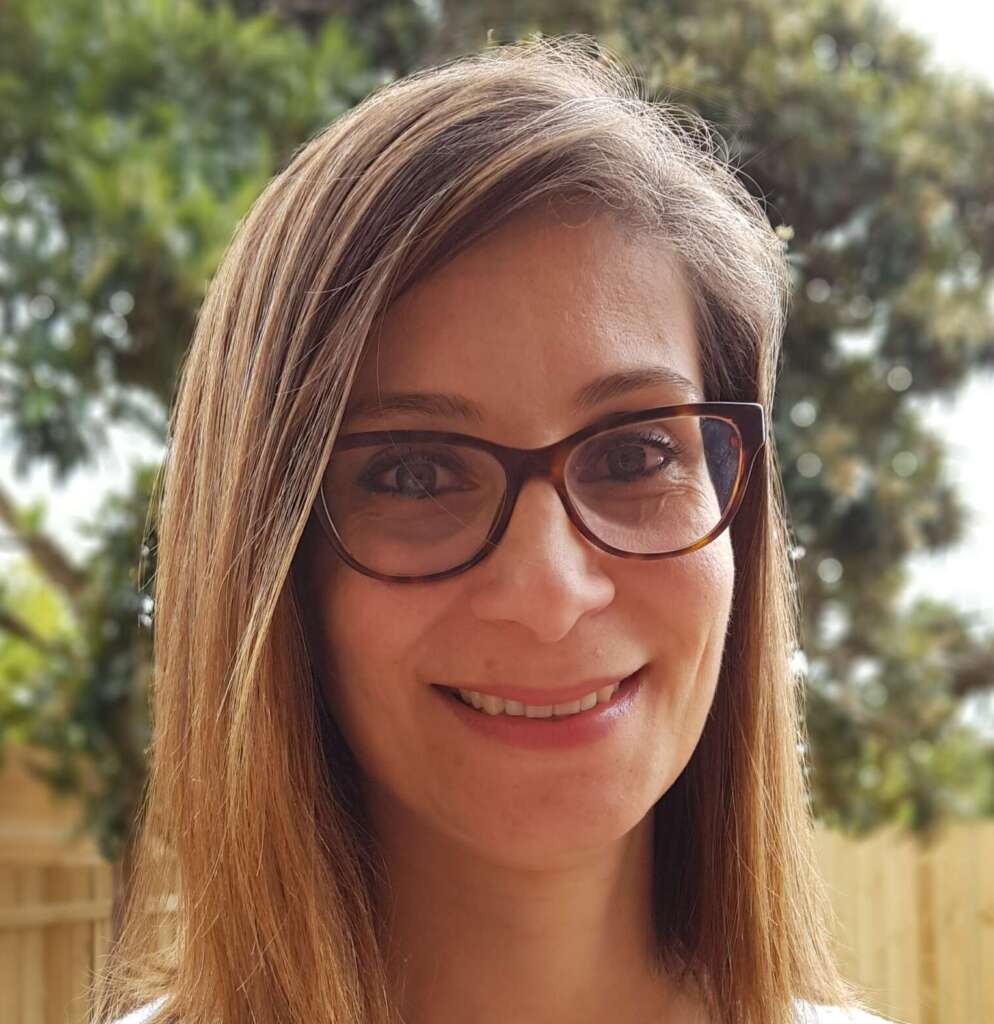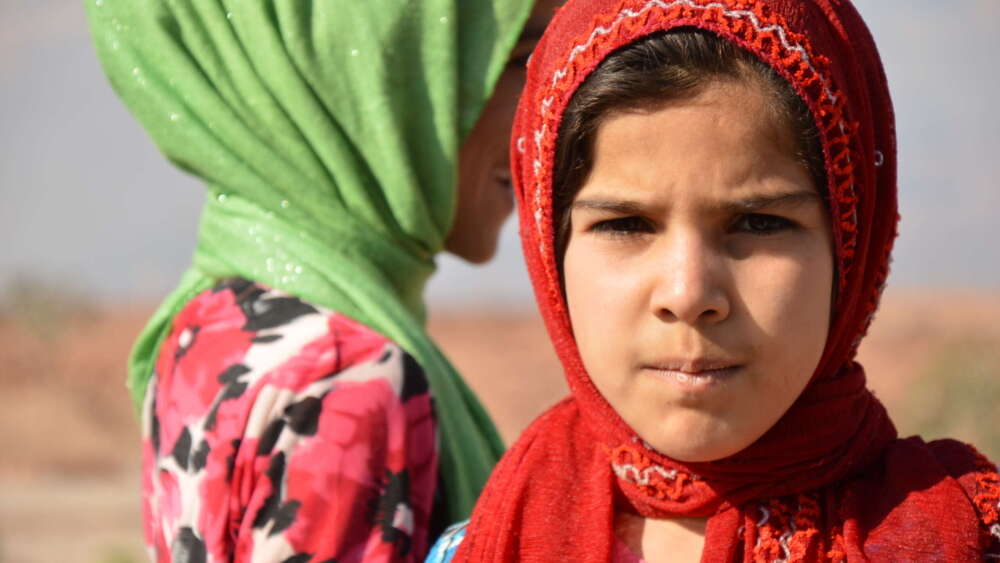An increase in conflicts and the impacts of climate change have pushed the number of refugees worldwide to an unprecedented 100 million people – an increase of 20 million over the past two years alone.
As if that figure wasn’t worrying enough, almost 40 per cent of that figure are children, of whom 21 million are classified as starving. And in some parts of the world, this is leading to unimaginable situations such as children going without food for days or even weeks and mothers having to decide which of their children will eat and which won’t.
“It is a dark day for humanity because a bit over two weeks ago, the UN announced that we have reached the dark milestone of over 100 million forcibly displaced people,” says Nadine Haddad, senior policy adviser with World Vision Australia, to mark World Refugee Day on Monday, June 20.
“This is a number that we have never experienced before. It is the largest number in known history, where there’s this many people that have been forcibly displaced, and the more worrying thing is that within just two years, that number has risen 20 million,” she says.
“So in 2020 at the beginning of the pandemic, we’d reached the 1 per cent of global population milestone, which was shocking and horrifying. But two years later that has risen by another 20 million. And this is basically because of more conflicts. Unfortunately, the pandemic did not even stop conflicts from taking place or atrocities and the impact of climate change.”
“It’s the perfect storm where there’s conflict, climate change, and the impact of COVID-19 that is forcing more and more people to flee their homes.” – Nadine Haddad
The UN says the number of countries affected by conflict is double what it was a decade ago. An obvious driver of the increase is the conflict in Ukraine, from where seven million people have fled. However, the biggest contributor to the number of displaced people continues to be Syria, where a staggering 30 million are displaced inside the country and another five million abroad. In Afghanistan, more than six million people are forcibly displaced.

Nadine Haddad
And there is a very complex crisis in the Sahel region in Africa – a wide band of countries including Burkina Faso, Somalia and Sudan that are mostly in conflict and are experiencing years of heatwaves, droughts and crop failures.
“It’s the perfect storm where there’s conflict, climate change, and the impact of COVID-19 that is forcing more and more people to flee their homes” – only to be caught in another crisis of climate change, “which is reinforcing underlying vulnerabilities.”
“We’re seeing that it’s creating increased competition over resources. It is leading to stresses in relation to inter-communal tension. And it’s challenging people’s livelihoods.”
For World Refugee Day, World Vision has released a report called Hungry and Unprotected – the Forgotten Refugees, which documents how the global hunger crisis is jeopardising the future of millions of children.
“That means that children can go days, if not weeks, without anything to eat.” – Nadine Haddad
The report documents an increase in the number of children being forcibly displaced or moving by themselves – unaccompanied minors or separated children without the care of their parents, along with an increase in women-headed households on the move, increasing their vulnerability.
“In the last 15 years of my career, I worked with a lot of displaced communities and the most people that I’ve met are women and children and a combination of factors make their lives miserable,” says Haddad.
“You’ve got conflict together with the social-economic fall-out of the pandemic, the climate emergency, and you’ve got economic turbulence that has led to steep rises in the number of displaced people and hunger. As we speak, the majority of people who are forcibly displaced are actually in countries that are experiencing a food crisis at the moment. So they’re not only dealing with the trauma of conflict and fleeing violence or leaving their homes. They’re actually falling into deeper and deeper food crisis. And many of them are already facing starvation. Twenty-one million children are currently facing starvation, and this is classified as between IPC 4 and 5, which is the extreme end of starvation, which is famine. That means that children can go days, if not weeks, without anything to eat.”
Haddad’s experience working with children affected by displacement and conflict has identified three main challenges – hunger and disease, disruption to education, and trauma.
“When we talk about children starving, we often don’t really understand the journey to get to the starvation level. It’s an excruciatingly painful and slow death where the internal body starts to shut down. A young body is ravaged by illnesses, infections, and it’s just a disease-filled journey when hunger that leads to that level. A majority of families are still experiencing the fallout of the pandemic. What that means is that they’re making really hard decisions of cutting down meals, going days without food, choosing which of their children gets to eat.”
Going without nutritious food in the first 1000 days of life condemns a child to a lifetime of physical and mental impairment.
To cope with such a terrible dilemma, some parents force their children into exploitative labour to bring in money or marry them off so that they can have one less mouth to feed.
Haddad says going without nutritious food in the first 1000 days of life condemns a child to a lifetime of physical and mental impairment, if they’re lucky enough to survive.
“The second thing is disruption to their education. An average displacement does not end in a few weeks or a few months. It actually stays on for two decades. As we’re seeing with Afghanistan and Syria, it’s been ten years … You know, some children in Syria are 15, but they have not had a chance to go to school. So what future do they have?
“And then lastly the trauma of the journey itself, of fleeing violence and conflict, but also the trauma of trying settle in a new place.”
Haddad says the response of neighbouring countries to the flood of refugees from Ukraine has been heartening, and “should be the golden standard for every child who flees conflict.” But more often, refugees are demonised and shut out with no access to medical care, no right to work, and no social safety nets.
“And when you think about asylum seekers, those who have made it to Australia, they’re demonised … instead of offering them the protection that they need, the basic human universal human rights, which is seeking asylum, instead they’re actually penalised for it. And now, unfortunately, we’re seeing the UK following the footsteps of Australia – it’s a sad day for humanity.”
It’s a crisis that divides people in Australia. Yet, the conflict in Ukraine has actually prompted a change in sentiment towards refugees, according to the UNHCR, which has reported record-breaking support from Australians.
Speaking on her final World Refugee Day as the National Director of Australia for UNHCR, Naomi Steer said it had been a year of incredible highs and lows.
“After Kabul fell to the Taliban last year, we saw an incredible outpouring of support – with $10.8 million raised through our emergency appeal. That was the largest private-sector contribution to UNHCR’s response in Afghanistan from anywhere in the world.
“Sadly, the Ukraine conflict began less than six months later; however, Australians have continued to give generously. The Ukraine appeal has now raised more than $13 million, the most money our organisation has raised for an emergency appeal in its 22-year history.”
A new global study, carried out in collaboration with UNHCR, shows greater public compassion for refugees since the beginning of the Ukraine conflict. The Ipsos survey found 83 per cent of Australians surveyed agreed that people should be able to “take refuge in other countries, including Australia, to escape from war or persecution.” This compares to 74 per cent in 2021.
A new global study shows a greater public compassion for refugees since the beginning of the Ukraine conflict.
This World Refugee Day, Australia for UNHCR is raising funds for protection activities, such as Blue Dot hubs, for refugees fleeing the war in Ukraine. Blue Dot hubs are safe spaces that have been established on border crossings in neighbouring countries. With 90 per cent of refugees from Ukraine women and children, these hubs offer services including child protection, children’s play spaces, psychosocial support and legal aid to guard against a heightened risk of violence, exploitation and trafficking.
Meanwhile, World Vision is urging the Australian government to provide a famine prevention package of $150 million.
“What people can do is speak to their MPs, write to their MPs, and ask Australia to step up and join the global efforts in responding to the global hunger crisis by providing $150 million in a prevention package. Just ask, ‘What is Australia doing?’
“We can’t keep just looking at our immediate region and ignore whatever happens in Somalia where 260,000 people are already facing famine as we speak, which is exactly the same number of people who died ten years ago in Somalia because nobody acted early.
“The second thing that we can do is we really need to start changing the story and reinvent the future. You know, climate change is real, and the implications of climate change are real, but the biggest driver of displacement and hunger is conflict, so we need governments around the world to do more in investing in conflict prevention, investing in conflict mediation; we need to give peace a chance. We need our children to live in a peaceful future.”
Email This Story
Why not send this to a friend?


